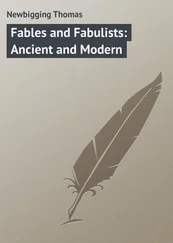Vikernes, Varg - Varg Vikernes - Sorcery and Religion in Ancient Scandinavia
Здесь есть возможность читать онлайн «Vikernes, Varg - Varg Vikernes - Sorcery and Religion in Ancient Scandinavia» весь текст электронной книги совершенно бесплатно (целиком полную версию без сокращений). В некоторых случаях можно слушать аудио, скачать через торрент в формате fb2 и присутствует краткое содержание. Жанр: Старинная литература, на английском языке. Описание произведения, (предисловие) а так же отзывы посетителей доступны на портале библиотеки ЛибКат.
- Название:Varg Vikernes - Sorcery and Religion in Ancient Scandinavia
- Автор:
- Жанр:
- Год:неизвестен
- ISBN:нет данных
- Рейтинг книги:3 / 5. Голосов: 1
-
Избранное:Добавить в избранное
- Отзывы:
-
Ваша оценка:
- 60
- 1
- 2
- 3
- 4
- 5
Varg Vikernes - Sorcery and Religion in Ancient Scandinavia: краткое содержание, описание и аннотация
Предлагаем к чтению аннотацию, описание, краткое содержание или предисловие (зависит от того, что написал сам автор книги «Varg Vikernes - Sorcery and Religion in Ancient Scandinavia»). Если вы не нашли необходимую информацию о книге — напишите в комментариях, мы постараемся отыскать её.
Varg Vikernes - Sorcery and Religion in Ancient Scandinavia — читать онлайн бесплатно полную книгу (весь текст) целиком
Ниже представлен текст книги, разбитый по страницам. Система сохранения места последней прочитанной страницы, позволяет с удобством читать онлайн бесплатно книгу «Varg Vikernes - Sorcery and Religion in Ancient Scandinavia», без необходимости каждый раз заново искать на чём Вы остановились. Поставьте закладку, и сможете в любой момент перейти на страницу, на которой закончили чтение.
Интервал:
Закладка:
6.0 The Voice of the Forefathers
6.1 The Eggjum Stone
There are many interesting archaeological finds which support my hypotheses and interpretations. The oldest are probably the cave paintings found in France, in Chauvet, in Ardèche and Lascaux, which are respectively about 35.000, 20,000 and 10,000 years old, where sorcerers with great skill have painted hunting scenes on the cave walls, probably as part of hunting spells. Another ancient evidence of the European religion's old age is a 5000 year old burial mound in Ireland called Newgrange ("new house"), but originally called Sid in Bruca ("the entrance to the underworld"), where at each Sunrise on the Winter Solstice the Sunlight shines into the innermost chamber. Everywhere in Europe we have, from the Stone Age to the Iron Age, evidence which can be understood in context with the ancient religion. In Scandinavia we have up to 6200 year old rock carvings and remains of men and women from the Bronze- and Iron Age found murdered and immersed in bogs. We have everything from burial mounds, ship graves and rock carvings to runic inscriptions. All of this can be understood in the light of the ancient religion.
Runic inscriptions are all from the late Iron Age, and the most interesting one is undoubtedly from a rune stone found in Eggjum in Western Norway, in proto-Nordic:
ni’s solu sot uk ni sākse stāin skorin
ni (????) maR nākda ni sn(?)r(??)R
ni wiltiR manR lāgi (??)
hin wārb nāseu maR
māde þaim kāibā i bormoþā huni
huwaR ob kam h ā rias hi a lat gotn ā
fiskr oR f(??)nā uim swuimade
foki i f(?)a(??) (???) gālande
alu misurki
Translated from proto-Nordic to Norse this becomes:
ní es sólu sótt ok ni saxi steinn skorinn
ní (????) maðr nakða ní sn(a)r(áð)r
ní viltir menn lægi (??)
hin varp násjó maðr
móði þeim keipa í bármóða húni
hver of kom herjáss hí á land gotna
fiskr ór f(or)na vim svimmandi
fákr í f(j)á(nda) (lið) galandi
öl missyrki
In English this is:
This stone is not burned by the Sun or cut with seax
not (???) undressed human being, not resourceful/wise
man does not wish to lie (???)
they threw corpse-sea (i. e. blood) over human
their strength travelled in boat (in/across) her strong river
from whence came a god of war from a bear's lair in the land of the gods
fish swimming from old (???)
horse screaming in pack of enemies
dangerous feast
When we know the New Year and Yule mysteries like we do now the runic inscription becomes understandable. The Sun did not shine on the runes, for when they did the runes lost their power. This was something that was said in the Viking era, and which today is interpreted literally. However, it may well be that it really meant that the secrets should not be revealed in the Sunlight, i. e. in public , but only inside the darkness of the grave.
The runes were not cut with iron tools. Perhaps it was thought originally only that the secrets should not be recorded (and thus be easily learnt by anyone who knew how to read), but instead they should only be memorized by specific individuals. This rule may have been misunderstood later on, perhaps as early as in the Iron Age.
The Eggjum stone had neither been cut with iron tools nor exposed to Sunlight. An undressed man had to be someone who had hung his clothes in the sacred tree, and thus disguised himself as Óðinn, here called Snaráðir ("resourceful", “wise”). He was not Óðinn/Snaráðr, but pretended to be, in order to gain access to the realm of the dead. We can all understand that no man wanted to lie in the grave, whether this was the man or the woman waiting inside for him. The corpse-sea, i. e. the blood, was the blood from the animals they slaughtered on the burial mound, dripping into the chamber inside.
The strength travelling in or across her (Hel's) river, through strong currents, is Baldr, who died and was sent to the underworld in a boat.
Then came the sorcerer/Váli (the chosen, who had become a god), born from the grave (the bear's lair in the land of the gods), the realm of the dead.
The swimming fish were the berserks, known from the myth about Valhöll as Þjóðvitnir's fish, standing guard, to prevent unworthy men from entering. The sorcerers/Váli lead a procession of initiates, riding from farm to farm, across the land, screaming, shouting, hunting and wielding torches, to kill the winter spirits. They were the disguised men, the Trojan horse, who fought in the dangerous battle of Ragnarök; the dangerous feast.
We don't know why this rune stone was made, nor do we know why it was found with the runes pointing down to the ground. Perhaps it was done to prevent unworthy ones from reading the runes. Perhaps it was shown only to those who were to learn these secrets.
6.2 Ívarr Ellison
Archaeology supports my theories, but also folk songs, and I want to provide you with an example; a song about Ívarr Ellison (younger name of the song is Ivar Elison). This is a medieval Norwegian song about a young man who was sent to school and who read books. His father had been killed with weapons, and no one had yet demanded vengeance. Someone then asked for vengeance. Ívarr was at school, because the priests wanted him to study. He then went to the playing field and played ball with his friends, until they were both blue and yellow (i. e. bruised badly). This was no game for women. They then sat down and the boys were angry at him for not having avenged his father's murder. Ívarr went into the stone room where he met his mother, and asked for the truth about where his father had gone. She picked up a silver ball and was very pale, before she said that his father had planned to give him this as a weapon. A horse waited for him in the stable, with grey fax, that had never been ridden before, according to his father. His father's bloodied shirt was hanging outside on the stone wall, she said, and she could tell that it had not been used since his father had been killed. Ívarr wondered if he had to go to church the next day and see his father's murderer, but he did not. He had to take two of his relatives, Pétr (the Greek name Peter, "rock", "cut") and Jon (the Hebrew name Johanan, "god is gracious"). You have to remember that this is a song recorded in Christian times. The three mounted their horses and rode away, and by the castle gate Ívarr turned toward his mother and said to her that she had to live well. The mother turned away in tears, and failed to answer her son.
When Ívarr and his entourage came to the murderer's farm he was told by the murderer that he knew Ívarr's horse, but not the rider. Was it perhaps Ívarr Ellison who came home from school? They dismounted their horses and went inside. Ívarr smiled and said to his father's murderer:
Heill sitir þú, Hermóðr illi, Glad you are sitting, Hermóðr the bad,
alls undir þitt gúla hár. under your yellow hair.
Munt þú nökkut kunnigr vera Do you know (anything about)
hverr minn föður vá? who killed my father?
Sure, maybe he knew who had killed his father, and he thought it was late to come for vengeance. Ívarr was a capable man, but said he would ride with his company to church and not talk about it. Hermóðr wanted no peace for Ívarr and told his men that they should ride with him after Ívarr and kill him and his company. Ívarr saw them coming and asked his men if they wanted to run away. They did not want to run and instead charged their assailants. Pétr cut two of them from their horses and they fell dead to the ground. Ívarr drew his sword from its sheath and attacked with all strength. He split the shield and mail and Hermóðr was cut in two halves by the navel. Ívarr and his relatives rode home happy from the desolate woods, where six men were left wounded and seven dead.
Читать дальшеИнтервал:
Закладка:
Похожие книги на «Varg Vikernes - Sorcery and Religion in Ancient Scandinavia»
Представляем Вашему вниманию похожие книги на «Varg Vikernes - Sorcery and Religion in Ancient Scandinavia» списком для выбора. Мы отобрали схожую по названию и смыслу литературу в надежде предоставить читателям больше вариантов отыскать новые, интересные, ещё непрочитанные произведения.
Обсуждение, отзывы о книге «Varg Vikernes - Sorcery and Religion in Ancient Scandinavia» и просто собственные мнения читателей. Оставьте ваши комментарии, напишите, что Вы думаете о произведении, его смысле или главных героях. Укажите что конкретно понравилось, а что нет, и почему Вы так считаете.












